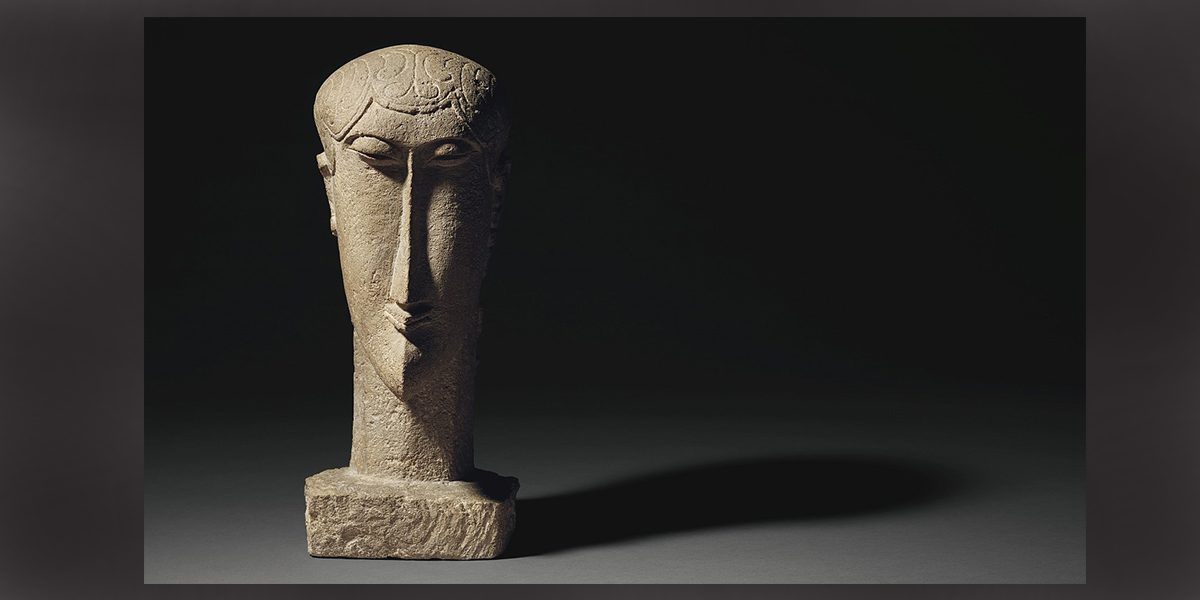Christie’s NY is to offer a rare Amedeo Modigliani limestone sculpture, Tête, carved circa 1911-1912, in its New York Evening Sale of Impressionist and Modern Art, On May 13, The estimate of $30-40 million is in line with the works being among the finest examples of the approximately twenty-six carved stones that defined Modigliani’s sculptural output, and one of the last left in private hands.
This marks the first time that one of Modigliani’s highly sought-after carved heads has been offered at auction in five years
Giovanna Bertazzoni, Co-Chairman of Impressionist and Modern Art, remarked: “It is an immense privilege to have the opportunity to offer Tête in New York this May. This is a magical and alluring work by one of the most significant artists of the 20th century. Modigliani’s simple and daring shapes have always attracted the attention of international collectors whose collecting interests range from Old Masters to Modernism and Contemporary Art and Contemporary Art. This marks the first time that one of Modigliani’s highly sought-after carved heads has been offered at auction in five years. The last example was sold in 2014 for a very strong price*, offering a perfect illustration of the extraordinary demand around these sculptures, which are so rarely available.”
*The current record for a sculpture by Amedeo Modigliani was achieved by Tête, 1911-1912 (an alternate example), which achieved $70.7m at Sotheby’s New York in November 2014
Adrien Meyer, Co-Chairman of Impressionist and Modern Art, continued: “Tête is one of the last sculptural masterworks by Modigliani in private hands, made all the more desirable by the fact that Modigliani identified himself primarily as a sculptor. The outbreak of WWI and Modigliani’s physical exhaustion had led him to abandon sculpture abruptly. Up at auction for the very first time, its great rarity makes it a perfect complement to Modigliani’s moving oil portrait of muse Lunia Czechowska, from the collection of Drue Heinz presented in the same sale.”
Alongside Picasso, Brancusi and Matisse, Amedeo Modigliani is rightly recognised as one of the pioneering masters of Modern sculpture. Modigliani differs from these artists; however, in that, his reputation is founded almost solely upon a unique series of works, all made in a brief and concentrated burst of creativity between 1911 and 1914. This series comprised of a sequence of twenty-six unique sculptures all created in Montparnasse in the years running up to the First World War. As the British artist Augustus John remarked after first encountering Modigliani’s sculpture in 1913, these “stone-heads affected me deeply. For some days afterwards, I found myself under the hallucination of meeting people in the street who might have posed for them; and that without myself resorting to the Indian Herb. Can ‘Modi’ have discovered a new and secret aspect of ‘reality’?” (quoted in A. Werner, op. cit., 1962, p. XVIII).
The present sculpture is a work that displays many of the unique motifs common to the finest of Modigliani’s stone heads. The frontal, hieratic position of the head; the elongated face; long, trapezoidal nose; smiling, v-shaped mouth; elongated ear-lobes and pointed chin are all distinguishing features, common to many of these pioneering works, but not found altogether in any of them, except here. In Tête, as in all of Modigliani’s sculptural heads, each of these features has been seamlessly amalgamated and refined into a unique configuration. The resulting effect conjures a personal, idiosyncratic sense of portraiture.
Because Modigliani was later to be so acclaimed for his painting, it is sometimes overlooked that the artist saw himself primarily as a sculptor. He had longed to be a sculptor ever since his first discovery of Michelangelo in his youth. However, it was only after becoming close with Constantin Brancusi in Paris in 1909 that Modigliani began a practice of making his own carved sculptures; learning, under Brancusi’s direction, to carve, first into wood, and subsequently into stone.
By 1911, Modigliani had abandoned painting almost entirely and from then on, until around 1914, sculpture became almost his sole practice. Between 1911 and 1914, Modigliani produced virtually all his known sculpture, very few paintings and a vast number of drawings and gouaches, all related either to sculpture or to sculptural projects. Tête is one of the series of either limestone or sandstone heads that Modigliani carved during this period.
At the basis of Modigliani’s sculptural vision was an innate concept of a sublime, timeless and all-encompassing beauty. This was a quality he had first divined from much of the Ancient Greek and Roman art he had encountered as a student in Rome and Florence. And, it was this, “truth in beauty”, he had written as a young man, that had laid the foundation for all his subsequent artistic endeavours.

